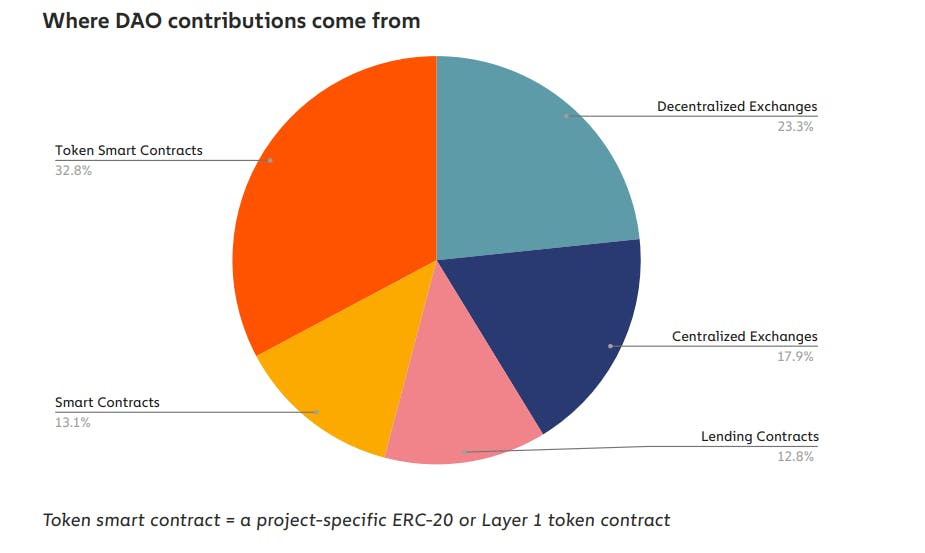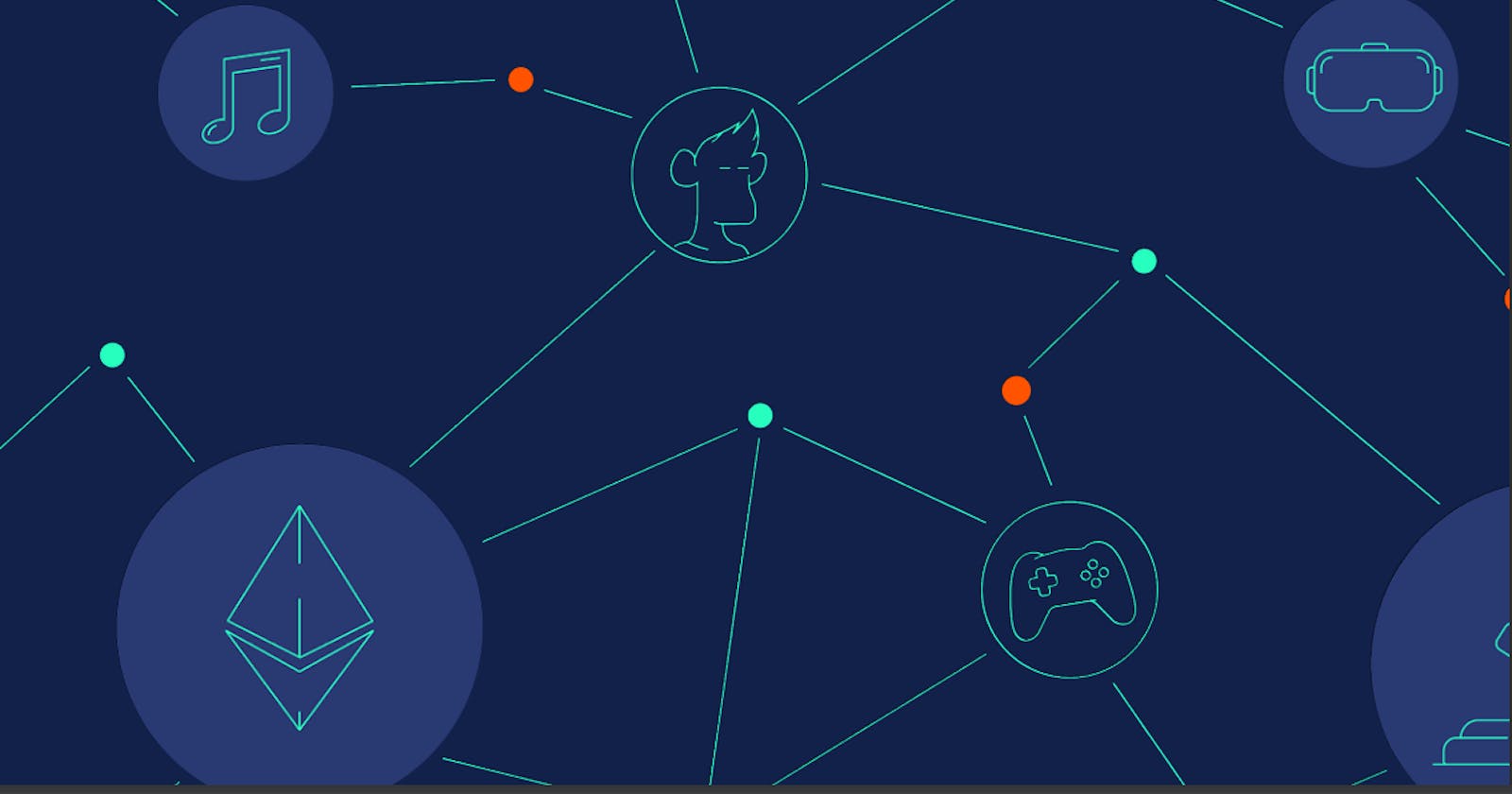Decentralized autonomous organizations (DAOs) are a staple of web3. Internet-native and blockchain-based, DAOs are intended to provide a new, democratized management structure for businesses, projects, and communities, in which any member can vote on organizational decisions just by buying into the project.
At a high level, this is how DAOs work:
1. DAO founders create a new cryptocurrency, known as a governance token.
2. They distribute these tokens to users, backers, and other stakeholders.
3. Each token corresponds to a set amount of voting power within the organization. Each token also corresponds to a price on the secondary market, where it can be bought and sold at will.
While this process is often described as a way to decentralize power, governance token data suggests that DAO ownership is highly concentrated.

The concentration of governance token holdings:
By analyzing the distribution of ten major DAOs’ governance tokens, we find that, across several major DAOs, less than 1% of all holders have 90% of voting power.

This has meaningful implications for DAO governance. For example, if just a small portion of the top 1% of holders worked together, they could theoretically outvote the remaining 99% on any decision. This has obvious practical implications and, in terms of investor sentiment, likely affects whether small holders feel that they can meaningfully contribute to the proposal process.
The impact of high concentration on DAO governance:
For a governance token holder, there are three key governance actions. Voting is simple — any holder can do it. But what about creating a proposal? And what about passing it.
Per these ten DAOs proposal requirements, we find that:
1. A user must hold between 0.1% and 1% of the outstanding token supply to create a proposal.
2. A user must hold between 1% and 4% to pass it. Using these ranges as lower and upper bounds, we find that between 1 in 1,000 and 1 in 10,000 of these ten DAOs’ holders have enough tokens to create a proposal.

There are several tradeoffs at play here. If too many holders can create a proposal, the average proposal’s quality may fall, and the DAO may be riddled with governance spam. But if too few can, the community may come to feel that “decentralized governance” rings false.
When it comes to single-handedly passing a proposal, between 1 in 10,000 and 1 in 30,000 holders have enough tokens to do so.
Overly concentrated voting power in DAOs can result in decision-making that seemingly contradicts the tenets of decentralization on which web3 is built. For instance, in June 2022, the DAO governing the Solana-based lending protocol Solend faced a problem: Solana’s price was dropping, and if it fell much further, the protocol’s biggest whale user would face a margin call that could render Solend insolvent and send roughly $20 million worth of Solana onto the market, potentially tanking the asset’s price and upending the entire Solana ecosystem. The DAO called a vote to take control of the whale’s account and liquidate its position through OTC desks, rather than the open market.
The proposal passed easily, with over 1.1 million “yes” votes to 30,000 “no” votes. However, more than 1 million of those votes came from a single user with enormous governance token holdings. Without their vote, the motion wouldn’t have passed the 1% participation rate necessary for quorum.

The decision triggered a backlash from the cryptocurrency community, with many questionings how a platform could claim to be decentralized and then take control of a user’s funds against their will. Following this, the Solend DAO voted again to invalidate the proposal, and the whale user eventually began to unwind their position. While the crisis was averted in this case, it raises questions about the ability of a DAO to act in the best interest of all participants when some voters control such an outsized share of governance tokens.
How do DAOs govern, exactly?
Actual governance processes vary enough from DAO to DAO that this question is best answered with examples. Let’s start with the biggest one: Uniswap.
Example: Uniswap Governance Uniswap is a decentralized exchange (DEX), and, like many DeFi protocols, it is governed by a DAO. Anyone who holds Uniswap’s governance token, UNI, is a member of this DAO. They can participate in governance by delegating their voting rights to their own or another’s address, by publicizing their opinions, or by submitting their own proposal. The contents of these proposals vary widely: holders have recently voted on whether to finance a grant program, whether to integrate a new blockchain, and whether to reduce the governance proposal submission threshold. But before someone can submit a proper proposal, their idea must pass the first two phases: temperature checks and consensus checks. 1. The temperature check determines whether there is sufficient community will change the status. At the end of the two days, a majority vote with a 25,000 UNI yes-vote threshold wins. 2. The consensus check establishes formal discussion around a potential proposal. At the end of five days, a majority vote with a 50,000 UNI yes-vote threshold wins. If both checks pass, an official governance proposal can be put to a vote. Then, there’s a seven-day deliberation period to discuss the merits of this proposal occurs on governance forums. If at the end of this period there are at least 40 million yes-votes with no-votes as a minority, the proposal has passed, and will be enacted after a two-day timeclock.Where are DAOs most common and well-funded?
DAOs span the entire length of web3:
• DeFi protocols like Uniswap ($UNI) and Sushi ($SUSHI).
• Social clubs like Friends with Benefits ($FWB) and Bored Ape Yacht Club ($APE).
• Grant-makers like Gitcoin ($GTC) and Seed Club ($CLUB).
• Play-to-earn gaming guilds like Good Games Guild ($GGG) and Yield Guild Games ($YGG).
• NFT generators like Nouns (1 NFT = 1 vote).
• Venture funds like MetaCartel and Orange DAO.
• Charities like Big Green DAO and Dream DAO (1 SkywalkerZ = 1 vote). • Virtual worlds like Decentralized ($MANA) and Sandbox ($SAND).
Who contributes to DAOs?
While we don’t collect demographic data about DAO participants, we can learn some things about DAO contributors using blockchain data.

As one might expect, DAO participants are advanced users of cryptocurrency services. Only 17.9% of DAO treasury funds came from centralized services, while the remaining 82.1% originated at decentralized services. This suggests that most DAO contributors also engage with DeFi platforms and likely self-host their cryptocurrency.
The future of DAOs:
As DAOs gain momentum, a cottage industry of tooling services and advocacy groups have emerged to help them grow and govern. Superdao streamlines DAO creation; Snapshot simplifies governance; and Coin Center advocates for the industry on Capitol Hill. As they continue to expand, it will be interesting to see what they can accomplish, what they will become, and to what extent they will achieve their goal to decentralize the ownership of the internet. With the proliferation of DAOs today, we’ll have plenty of chances to see.

